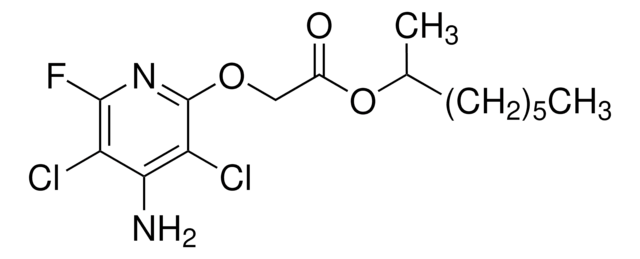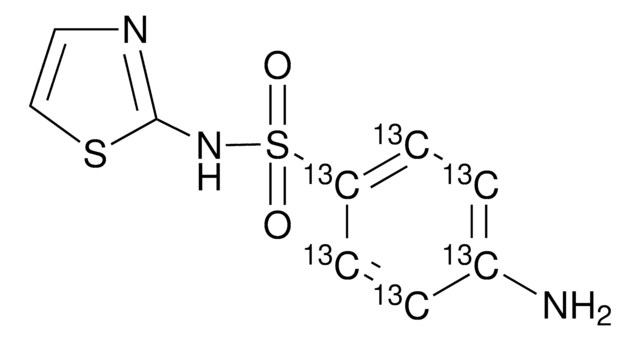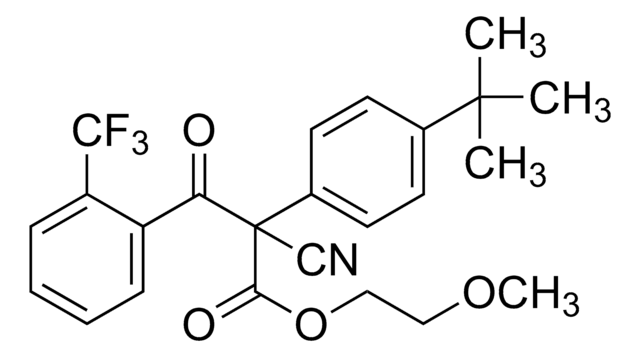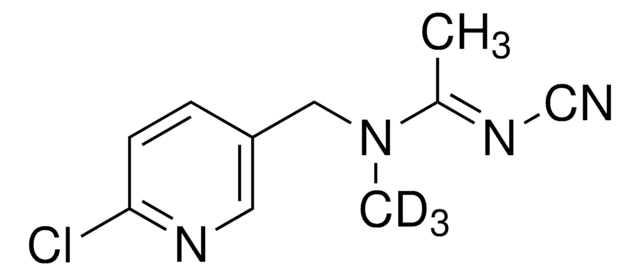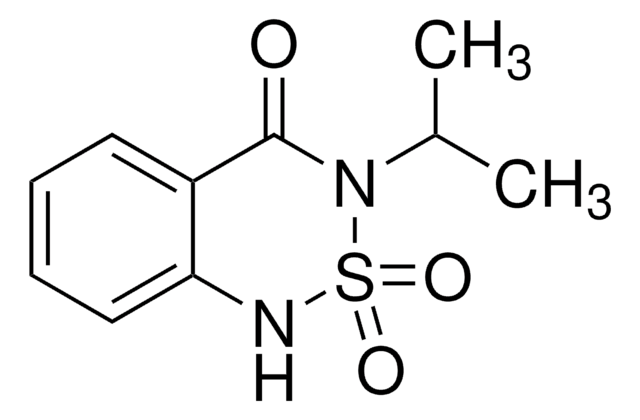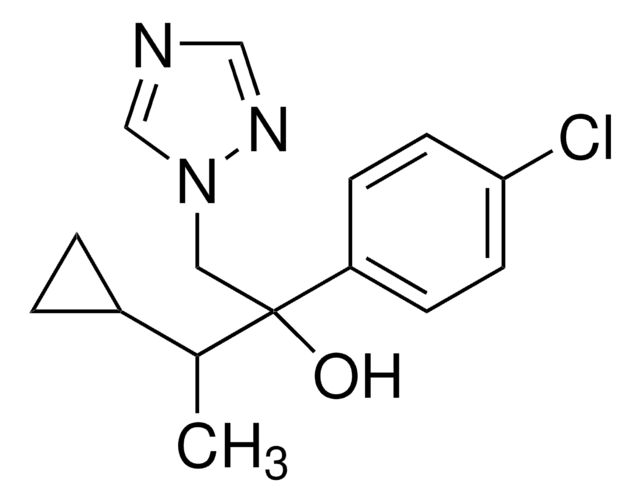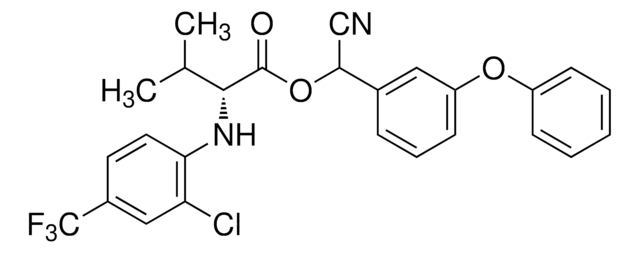Key Documents
45758
Fluroxypyr
PESTANAL®, analytical standard
Synonim(y):
2-[(4-Amino-3,5-dichloro-6-fluoro-2-pyridinyl)oxy]acetic acid, 4-Amino-3,5-dichloro-6-fluoro-2-pyridyloxyacetic acid
About This Item
Polecane produkty
klasa czystości
analytical standard
linia produktu
PESTANAL®
okres trwałości
limited shelf life, expiry date on the label
Zastosowanie
agriculture
environmental
format
neat
ciąg SMILES
Nc1c(Cl)c(F)nc(OCC(O)=O)c1Cl
InChI
1S/C7H5Cl2FN2O3/c8-3-5(11)4(9)7(12-6(3)10)15-1-2(13)14/h1H2,(H2,11,12)(H,13,14)
Klucz InChI
MEFQWPUMEMWTJP-UHFFFAOYSA-N
Szukasz podobnych produktów? Odwiedź Przewodnik dotyczący porównywania produktów
Powiązane kategorie
Zastosowanie
- Impact of herbicide runoff: Research compares runoff losses and toxicity between residual and knockdown herbicides, including Fluroxypyr, when applied to sugarcane fields, demonstrating significant differences relative to traditional treatments such as Diuron. This study underscores the importance of selecting appropriate herbicide treatments for effective weed management while minimizing environmental impact (Silburn et al., 2023).
- Herbicide resistance and management: A study focused on Florasulam-resistant flixweed in North China highlights the potential role of alternative herbicides, including Fluroxypyr, for managing resistant weed populations. The research provides insights into herbicide selectivity and efficacy, aiding in the development of more effective weed management strategies (Wang et al., 2021).
- Herbicide pollution assessment: Utilizing a multi-dimensional approach, this study assesses herbicide pollution in catchment areas, discussing the implications of Fluroxypyr among other herbicides. It focuses on the ecological consequences of herbicide use and the necessity for accurate pollution assessment techniques to ensure environmental safety (Khan et al., 2020).
Informacje prawne
Zwroty wskazujące rodzaj zagrożenia
Zwroty wskazujące środki ostrożności
Klasyfikacja zagrożeń
Aquatic Chronic 3
Kod klasy składowania
11 - Combustible Solids
Klasa zagrożenia wodnego (WGK)
WGK 2
Temperatura zapłonu (°F)
Not applicable
Temperatura zapłonu (°C)
Not applicable
Środki ochrony indywidualnej
Eyeshields, Faceshields, Gloves
Certyfikaty analizy (CoA)
Poszukaj Certyfikaty analizy (CoA), wpisując numer partii/serii produktów. Numery serii i partii można znaleźć na etykiecie produktu po słowach „seria” lub „partia”.
Masz już ten produkt?
Dokumenty związane z niedawno zakupionymi produktami zostały zamieszczone w Bibliotece dokumentów.
Klienci oglądali również te produkty
Nasz zespół naukowców ma doświadczenie we wszystkich obszarach badań, w tym w naukach przyrodniczych, materiałoznawstwie, syntezie chemicznej, chromatografii, analityce i wielu innych dziedzinach.
Skontaktuj się z zespołem ds. pomocy technicznej